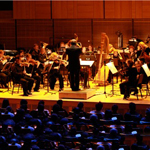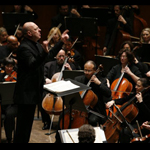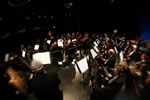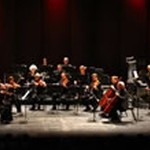All | Orchestras | Chamber Music and Choruses | Music Institutes | Special Venues and Presenters
New York: Classical Music, Orchestras
New York Classical Music: Orchestras in New York
The New York Philharmonic is world-renowned, but it is not the only professional orchestra in New York City. Below are our recommendations, with information on location, ticket prices, transportation/parking, theater history and other points of interest.
American Composers Orchestra
This group is dedicated to the performance of living American composers’ music, and to its creation. The orchestra’s ever-growing number of commissioned composers—which include such seminal figures as John Cage, Milton Babbitt, Terry Riley, Stephen Sondheim, Philip Glass, David Lang, Jennifer Higdon, to mention only a smattering—is a veritable “Who’s Who” of relevant, homegrown orchestral creators. ...more...
American Symphony Orchestra
The American Symphony Orchestra (ASO) fills a wonderfully specific niche in the greater classical music community, particularly stateside. The ASO seeks to perpetuate the legacy of rare and neglected compositions of the classical canon. This commitment inevitably leads to many United States and New York premieres. The ensemble also functions as the resident orchestra of the Richard B. Fisher Center for the Performing Arts at Bard College in upstate New York. ...more...
Brooklyn Philharmonic
Since 1954, the Brooklyn Philharmonic has been the borough’s only professional orchestra and has established an illustrious reputation, performing more than 166 world premieres, 65 of them commissions. The winner of 22 ASCAP Awards in “Adventurous Programming of Contemporary Music,” the “modern urban orchestra” counts among its past conductors Robert Spano, Dennis Russell Davies, and Lukas Foss. ...more...
Little Orchestra Society
The Little Orchestra Society was founded in 1947 to present the medium of the chamber orchestra to the public. The orchestra offers an abundance of programs and events tailored for children, as evidenced by its engaging Happy Concerts and Lolli-Pops series. These programs feature music such as Camille Saint-Saëns’ Carnival of the Animals, Leonard Bernstein’s West Side Story, and Amahl and the Night Visitors by Gian Carlo Menotti. ...more...
New York Philharmonic
The New York Philharmonic Orchestra is the oldest orchestra in the U.S. and the third oldest in the world. The NY Phil offers a variety of music, from the standard classical repertoire to new commissions by living composers. This group is highly innovative and strives to make music accessible to all, offering many opportunities to learn more about its programs through lectures and special concert series. ...more...
New York Pops
The New York Pops, which began in 1983, devotes itself to interpretations of iconic American works by such seminal composers and songwriters as George Gershwin, Aaron Copland, Duke Ellington, Leonard Bernstein, and Stephen Sondheim… The country’s largest independent orchestra focused on Pops fare, the ensemble retains accessibility to the community not only through its free summer concerts in New York City parks, but also through its myriad education programs. ...more...
Orchestra of St. Luke’s
The Orchestra of St. Luke’s is one of the most recognizable musical organizations in the country, and a pivotal ambassador for orchestral and chamber music in the New York scene… St. Luke’s performance arm is bilateral. The larger Orchestra of St. Luke’s performs annually in its reputable Carnegie Hall series and as orchestra-in-residence at the summertime Caramoor International Music Festival, where it first came into existence in 1979. ...more...
Orpheus Chamber Orchestra
Begun in 1972, this singular ensemble transfers the performance dynamic of a chamber music ensemble to the medium of the symphony orchestra. There is no conductor, and the principals vary from piece to piece. The result is an organic and intuitive approach to orchestral repertoire, complete with the vitality that emerges only when individual energies coalesce into a unified interpretation. ...more...









